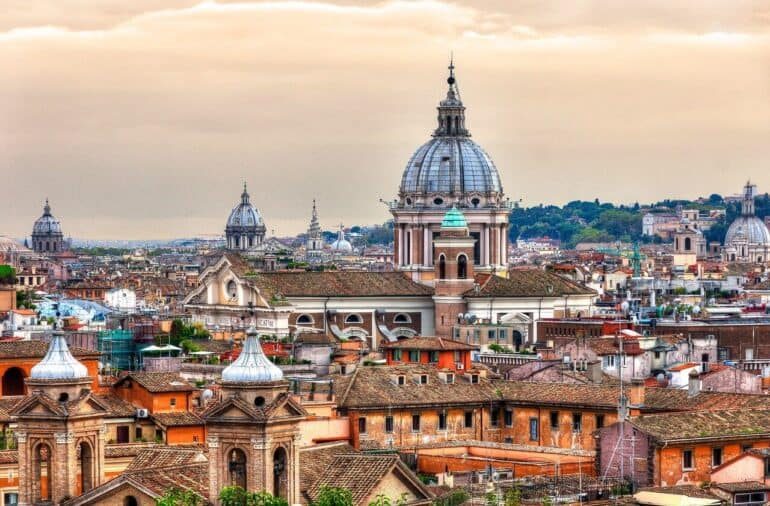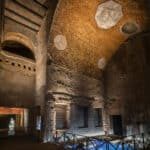The best churches in Rome to visit
Do you know how many churches there are in Rome? Over 900. So shortlisting only 16 to visit is certainly a hard task. Undoubtedly, the Italian capital is the most interesting place on Earth when it comes to visiting basilicas, cathedral and churches. It doesn’t even matter whether you’re religious or not, visiting these churches in Rome along with their architectural magnificence and artistic masterpieces is must. Our task hasn’t been easy, but now it’s up to you to become familiar with the characteristics of each of these churches and and visit the ones that interest you the most.
- San Giovanni in Laterano
- Santa Maria Maggiore
- San Paolo fuori le Mura
- St. Peter’s Basilica
- Santa Sabina all’Aventino
- Santa Prassede
- Santo Stefano Rotondo al Celio
- Santa Maria in Trastevere
- Santa Maria degli Angeli e dei Martiri
- Sant’Ignazio di Loyola
- Santa Maria sopra Minerva
- Santa Croce in Gerusalemme
- Pantheon
- Santa Maria del Popolo
- Basilica di San Clemente
- Sant’Ivo alla Sapienza
- Tips before Visiting a Church in Rome
San Giovanni in Laterano (Basilica of St. John Lateran)
Piazza di St. Giovanni in Laterano, 4 (San Giovanni)
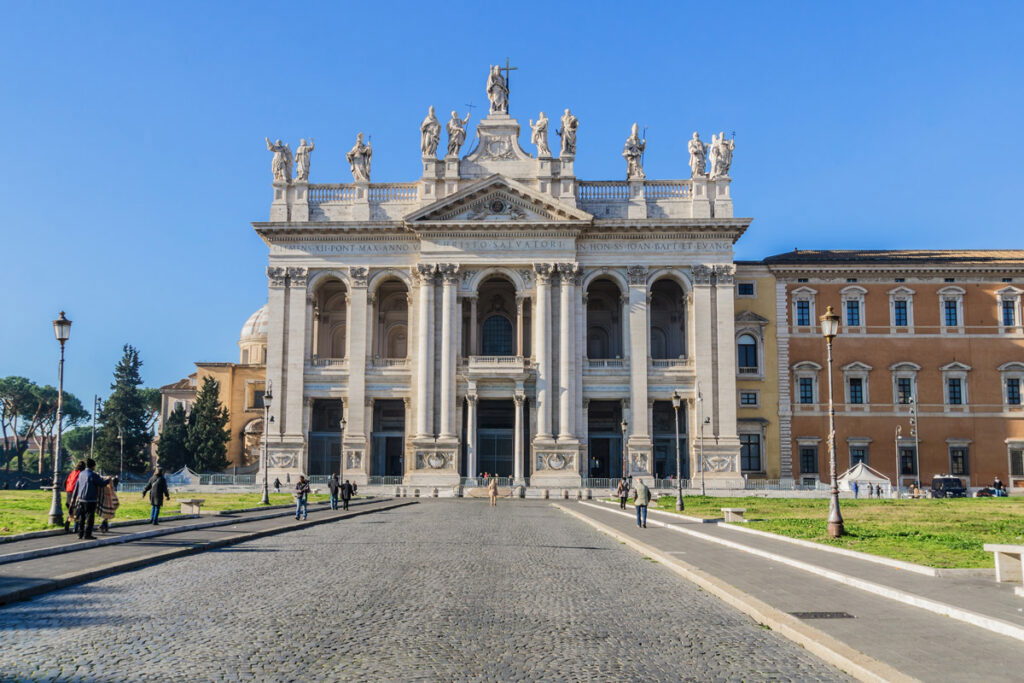
The massive white structure of this church is the first thing that’ll capture your attention. But as you get closer, you’ll notice the artistic details, from the spiral columns to the sculptures that adorn the basilica. But the most astonishing fact is that unlike many believe, the Basilica of San Giovanni in Laterano is the official cathedral of Rome and the most important of the four major basilicas in Rome, not to mention the first basilica to be built by Constantine in the 4th century. The Basilica, or Cathedral of Rome, is the seat of the Pope as bishop of Rome and the oldest public church of the Italian capital. Step inside to immerse yourself in a world of art and fascination. The interior with five aisles is the result of work done by Borromini for the Jubilee of 1650. The majestically enormous sculptures, stunning paintings, arches, jaw-dropping ceiling, frescoes, mosaics and of course the Holy Sacrament Altar, make San Giovanni in Laterano one of the must-visit churches in Rome.
Suggested Read: The Four Papal Basilicas In Rome
Santa Maria Maggiore (Basilica of St. Mary Major)
Piazza di Santa Maria Maggiore, 42 (Esquilino)
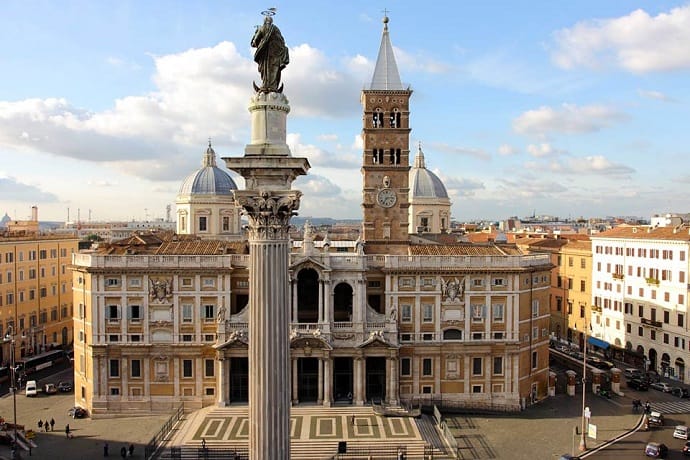
Santa Maria Maggiore is the largest church dedicated to the Virgin Mary and one of the four patriarchal basilicas of Rome. Unlike many other churches, St. Mary Major is one of the only basilicas in Rome to have kept its early Christian structure, remaining a great example of an early Christian Basilica. One of the most interesting aspects of this church is its 75-meter tall Renaissance Romanesque style bell tower, which is the tallest in Rome. It was built by Gregory XI on his return to Rome from Avignon and houses five bells at the top. One of the bells is a call for all the faithful and rings every evening at 9pm. The basilica is also known for its stunning 5th century mosaics commissioned by Pope Sixtus III, found in the central nave and triumphal altar. But these are just some of the marvels to admire at Santa Maria Maggiore. The basilica is also the resting place of the famous artist Gian Lorenzo Bernini. You can find his tomb on the right side of the altar.
San Paolo fuori le Mura (St. Paul Outside the Walls)
Piazzale San Paolo, 1 (San Paolo)
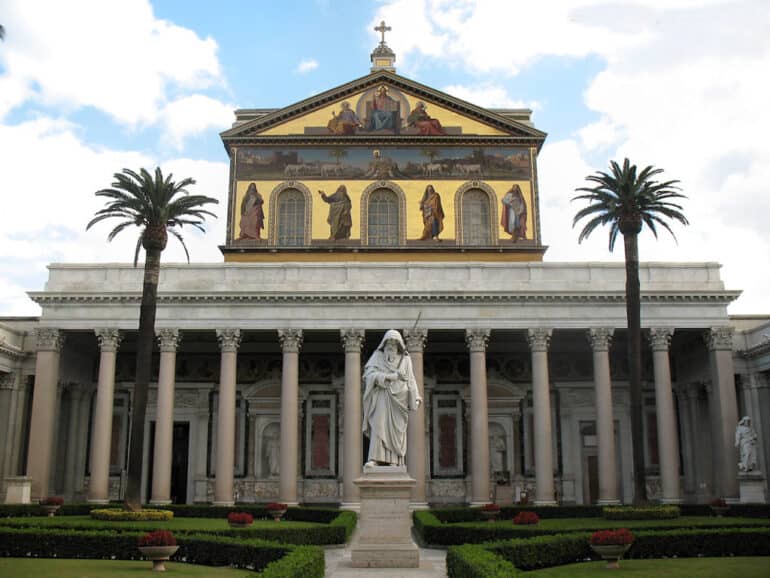
San Paolo fuori le Mura is a memory of the 4th century. It is one of the four papal basilicas in Rome and is the second largest after St. Peter’s Basilica. Visiting this basilica could turn out to be the highlight of your travel. The interior of the church makes you feel the soft marble and gold touch with your eyes. For a second or two, you lose the power of movement and you stand there still, in awe. Floor-to-ceiling columns, golden mosaics, portraits of every Pope since Peter, and an out-of-this-world ceiling with golden decorations make this basilica one of the most beautiful churches in Rome. Another upside of this basilica is that it’s not usually crowded due to its rather isolated location. If you enter the courtyard to visit the tomb of St. Paul, you find yourself in the middle of lofty palm trees surrounded by an amazing rectangular collection of columns. In the center, you see the statue of the apostle Paul (San Paolo). You simply cannot get enough of the peace created by the biblical figure resting on these grounds for centuries.
San Pietro (St. Peter’s Basilica)
Piazza San Pietro, Città del Vaticano (Vatican)
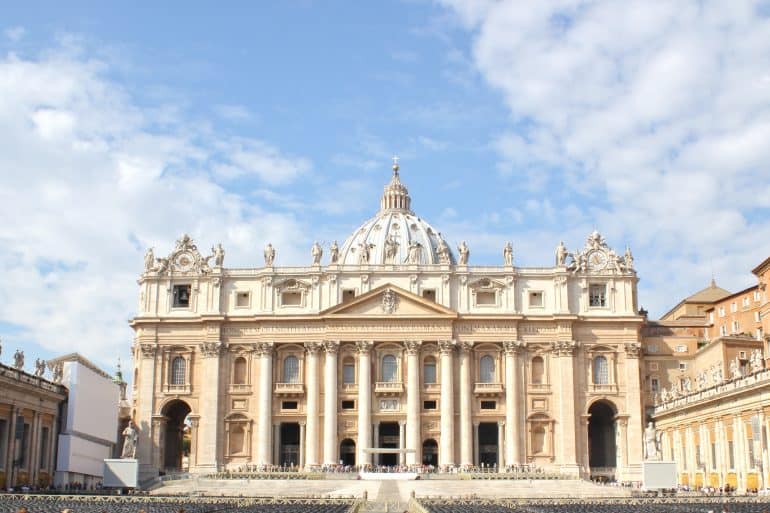
Being the biggest church in the smallest country in the world, Saint Peter’s Basilica is the symbol of the Vatican and the most important church of Christianity. Do not mistakenly consider it as the first church in history because it is not! Before the construction of today’s St. Peter’s Basilica, the grounds were taken up by the first church in the world built under Constantine, who believed it was the resting place of Peter, the first-ever Pope who was crucified by Emperor Nero. San Pietro is one of the holiest Catholic shrines in the world and an admirable manifestation of Renaissance architecture. It carries the honor of having been majorly designed by Michelangelo, Bramante, Bernini and Carlo Maderno. Not to mention, it’s home to the striking statue of the Pietà by Michelangelo and to the wonderful Baldachin of Bernini. There are more than 100 tombs in the St. Peter’s Basilica, of which 91 belong to former popes, as well as 395 statues and a gorgeous dome that lies right above St. Peter’s tomb. The basilica is so huge that it can host 20,000 visitors at a time. If you like a great view, don’t forget to head to the cupola to get a fabulous panoramic view of the city.
Santa Sabina all’Aventino
Piazza Pietro D’Illiria, 1 (Aventine)
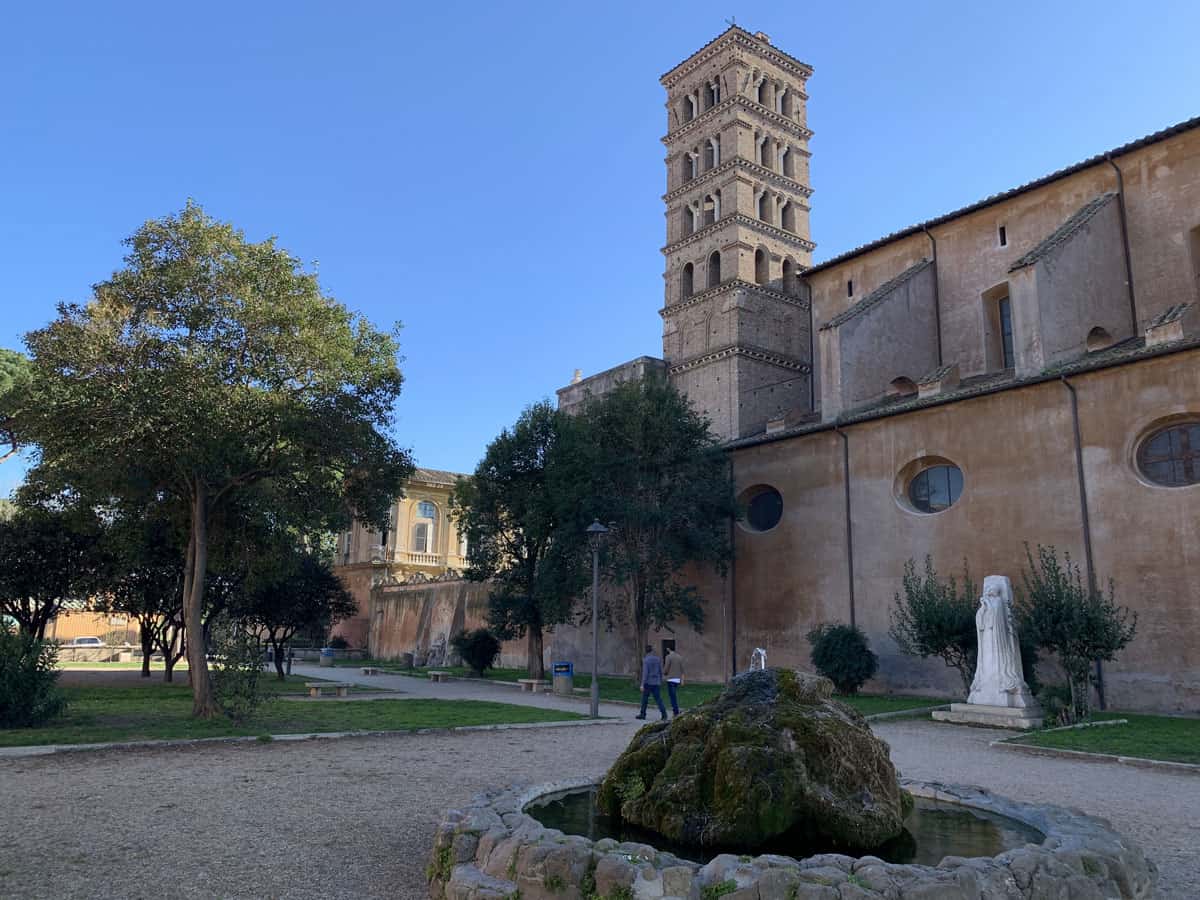
Located on Aventine Hill, Santa Sabina all’Aventino is one of the oldest and most authentic churches in Rome, dating back to 425 AD. At a first glance, you easily notice that it is much simpler in design in comparison to other baroque basilicas in Rome–but it is definitely worth a visit. Since it’s located above Aventine Hill, it offers a flawless view of Rome from the terrace of a small park just nearby, Giardino degli Aranci. The basilica itself is a great example of the ancient architecture of the 5th century, though it has undergone restorations and renovations through time. The main wooden door is a wonderful piece of handicraft. Then, you are pleasingly amazed at the 24 columns on the two sides of the interior. The Pope celebrates the Holy Mass of Ash Wednesday here every year.
Santa Prassede
Via di Santa Prassede, 9/a (Esquilino)

This modest orange basilica that dates back to the 9th century is located in the cozy street of Santa Prassede, footsteps from Santa Maria Maggiore. Don’t get fooled by the exterior, the interior is glorious. Orange, red, and navy blue dominate the basilica, offering a lovely game of colors. The whole combination of granite columns, spectacular arches, remarkable Middle Age golden mosaics, Byzantine and Baroque decorations, and early Christian frescoes makes this basilica an attraction for art lovers. Above all its fascinations, the church is famous for its mosaics that are so shiny and bright the church is known as “the Garden of Paradise”. In this church you will also find the Column of Flagellation, which is said to be the column on which Jesus Christ was flogged in his final years. While the marble table used to be a bed for the penance of the saint. Lastly, the urn by the entrance has the remains of the bones of San Valentino, the protector of lovers.
Santo Stefano Rotondo al Celio
Via Santo Stefano Rotondo, 7 (Celio)
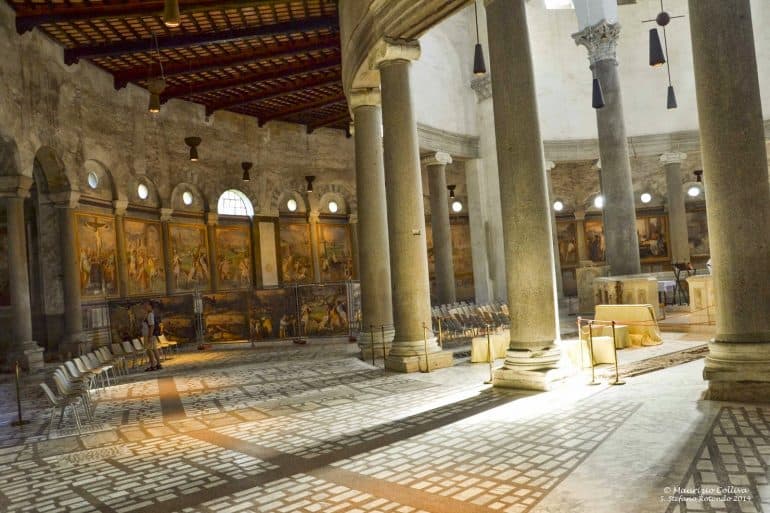
The most unique characteristic of this hidden church on Celio Hill is its circular plan. Its construction dates back to the 4th century, at the time of Constantine. As the name suggests, this church was built in commemoration of Santo Stefano, the first Christian martyr. You can find 34 frescoes of other Christian martyrs around the interior of the church. So, be prepared for many ancient stories as the frescos have a lot to say. The arches and columns are both simple and fascinating at the same time.
Santa Maria in Trastevere
Piazza di Santa Maria in Trastevere (Trastevere)
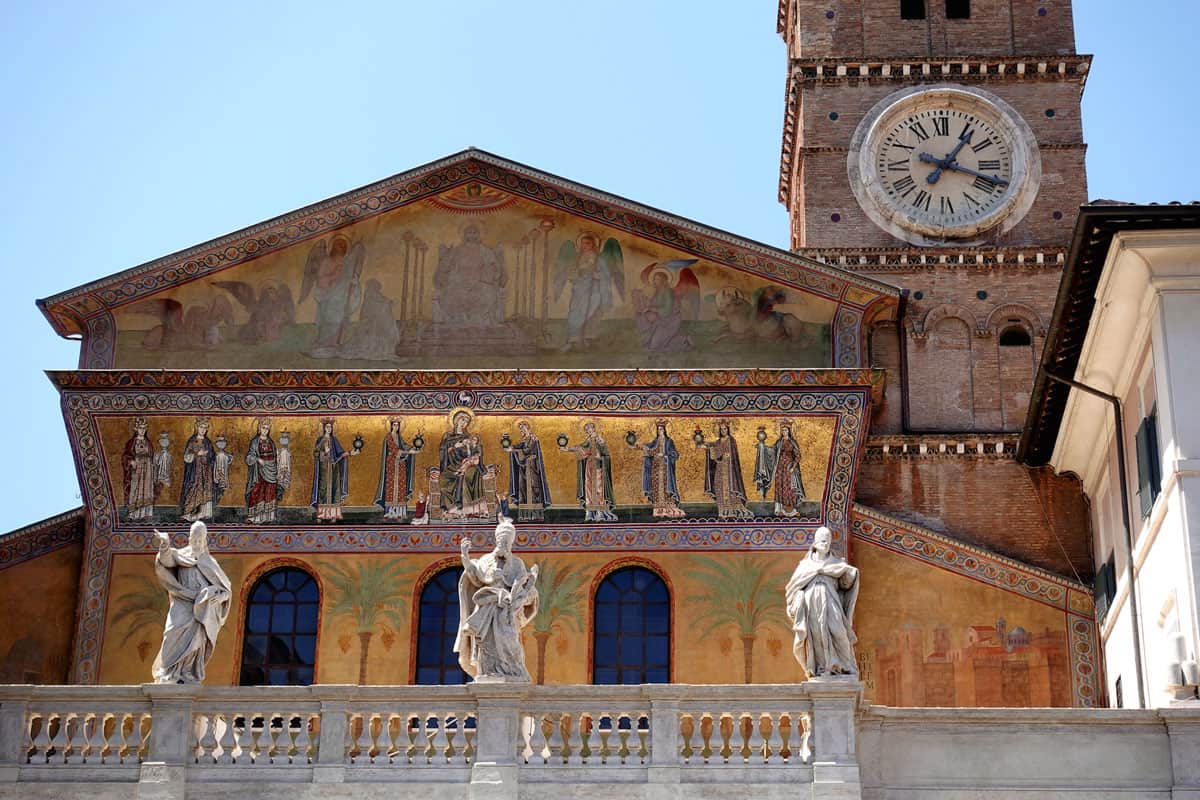
www.flickr.com/photos/justaslice/
If you’re strolling through the Trastevere neighbourhood, don’t miss out on the stunning Basilica of Santa Maria in Trastevere–one of the most beautiful and serene churches in Rome. Its initial construction dates back to 340 AD. Other decorations such as famous Byzantine mosaics were made later in the 11th century. The octagonal ceiling stuns you when you first look at it. It is full of gorgeous jewels and also Domenichino’s Assumption of the Virgin. The golden mosaic arch is a mesmerizing feature of the church. The marvellous façade view of its exterior finds its way through perfection by the octagonal fountain in the Piazza di Santa Maria in Trastevere. Find a seat and relax for a while as you enjoy the exterior view. Be careful about the “smart” locals who want to sell entrance tickets, entrance is free.
Santa Maria degli Angeli e dei Martiri (Basilica of St.Mary of the Angels)
Piazza della Repubblica
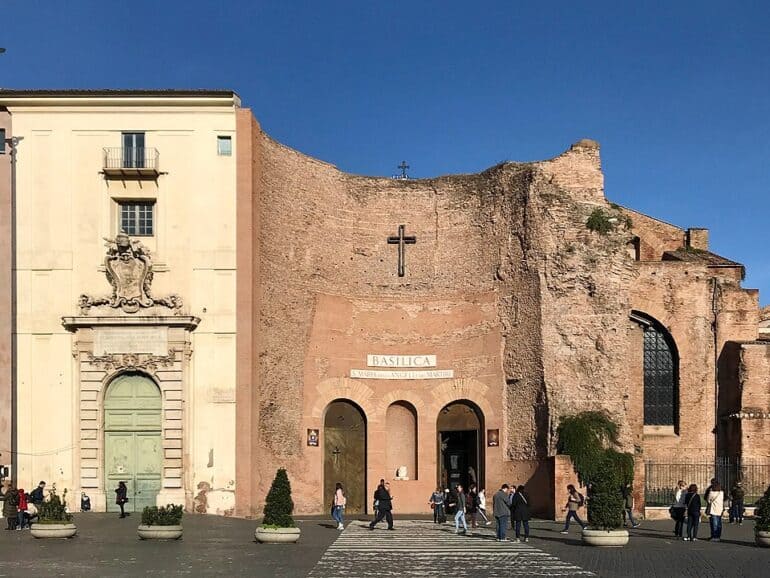
Designed by Michelangelo himself, the basilica was built into the ruins of the famous Diocletian Baths. Its name comes from a legend of Christian martyrs who died during its construction. In fact, you may even walk past the basilica without noticing as there is no true facade. Gorgeous frescoes, which revolve around the religious history of Christianity, together with the artistic statues have made a great awe-inspiring interior. You can also trace the footsteps of Michelangelo here through the stunning bathtub. Tall marble columns and arches with detailed plasterwork and the dominant light pink color have given a delicate dignity to the church. You can also see the meridian solar line on the floor which is the creation of Bianchini, an 18th-century astronomer. Not only is the Basilica of St. Mary of the Angels unique, it was also the official state church of the Kindgom of Italy, and even a burial site for state funerals. Though usually ignored by the tourists, Santa Maria degli Angeli is a must-see church in Rome.
Sant’Ignazio di Loyola (Church of St. Ignatius Loyola)
Via del Caravita, 8a (centro storico)
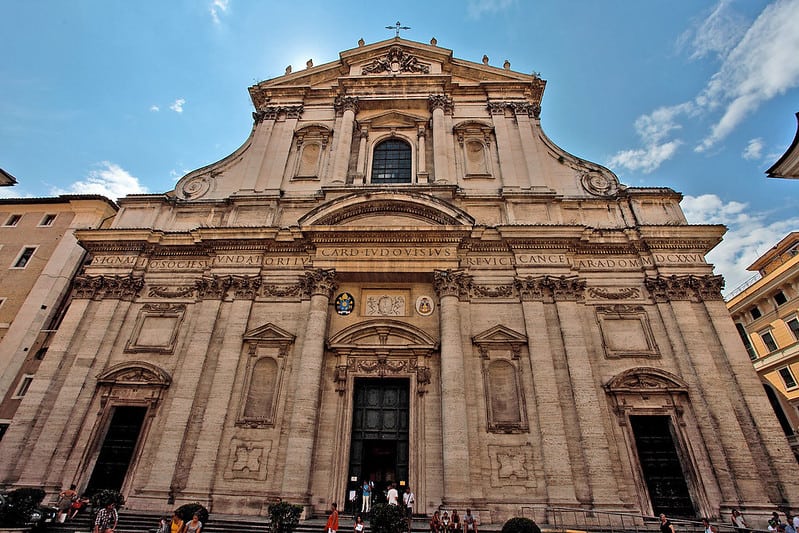
Located a stone’s throw away from the Basilica of Santa Maria Sopra Minerva, I would call Sant’Ignazio di Loyola a luxurious and glorious church. Both the travertine exterior and golden interior are soul touching. The ceiling is a mind-blowing showcase of extremely valuable and marvelous architecture and painting. You may see things in the ceilings that are not actually there and it is the genius of its creator that causes the optical illusions. The walls are home to admirable statues, which accompany the other outstanding elements. The wooden works, simple yet elegant church benches, and the fantastic altar with many paintings are other features.
Santa Maria sopra Minerva
Piazza della Minerva, 42 (centro storico)

Not far from the Pantheon, Santa Maria sopra Minerva is one of the few Gothic churches in Rome, dating back to the 13th century. Golden Baroque style stucco details were added in the early 17th century, which were almost removed during the mid-19th century. Among the elements that leave you mesmerized are the three naves, the blue vault with gold stars, and the two big organs. Here you can see many exquisite works of art: the Carafa Chapel built and decorated by Filippino Lippi in honour to Saint Thomas Aquinas, the statue of Michelangelo of Christ the Redeemer, and below the main altar lie the relics of the famous Saint Catherine of Siena, while the tombs of two Medici popes, Leo X and Clement VII, are in the apse. The dance of the navy blue, gold, and marble colors is quite pleasing to the eye. As the Pantheon draws all the attention to itself, Santa Maria sopra Minerva is usually quiet and peaceful.
Santa Croce in Gerusalemme (Basilica of the Holy Cross in Jerusalem)
Piazza di S. Croce in Gerusalemme (San Giovanni)
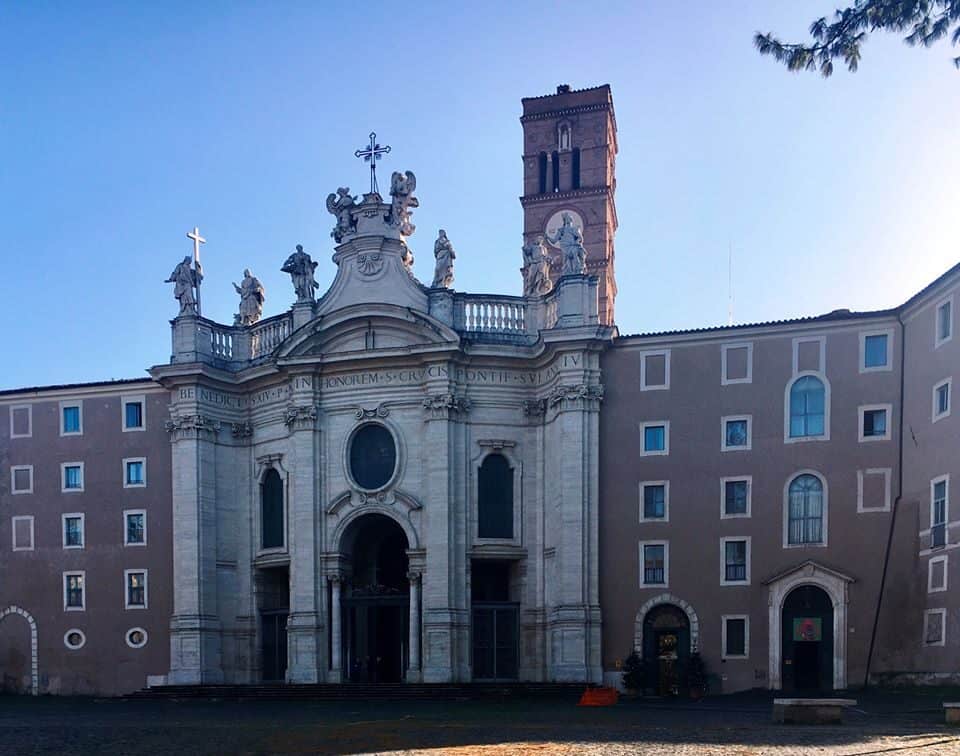
The Basilica of the Holy Cross in Jerusalem is located in the Esquilino neighbourhood with a solemn white exterior. Santa Croce in Gerusalemme owes its existence to Pope Benedict XIV who ordered the two architects, Pietro Passalacqua and Domenico Gregorini, to build the church. For those who need absolute silence for peace of mind and contemplation, this is the best place. Christians can also find important relics such as the St. Thomas’s fingernails that once tortured Jesus, a piece of the wood of the cross, etc. The interior design is just as glorious as the façade. The columns at the two sides of the church, with two rows of benches and an altar with navy blue decorations, are perfectly matched. Like other churches, you can raise your head up and amaze at the designs and paintings of the ceiling. Furthermore, the majestic Basilica of San Giovanni in Laterano is not so far away. So, plan ahead to visit its beauties as well.
Pantheon (Basilica of St. Mary and the Martyrs)
Piazza della Rotonda (centro storico)
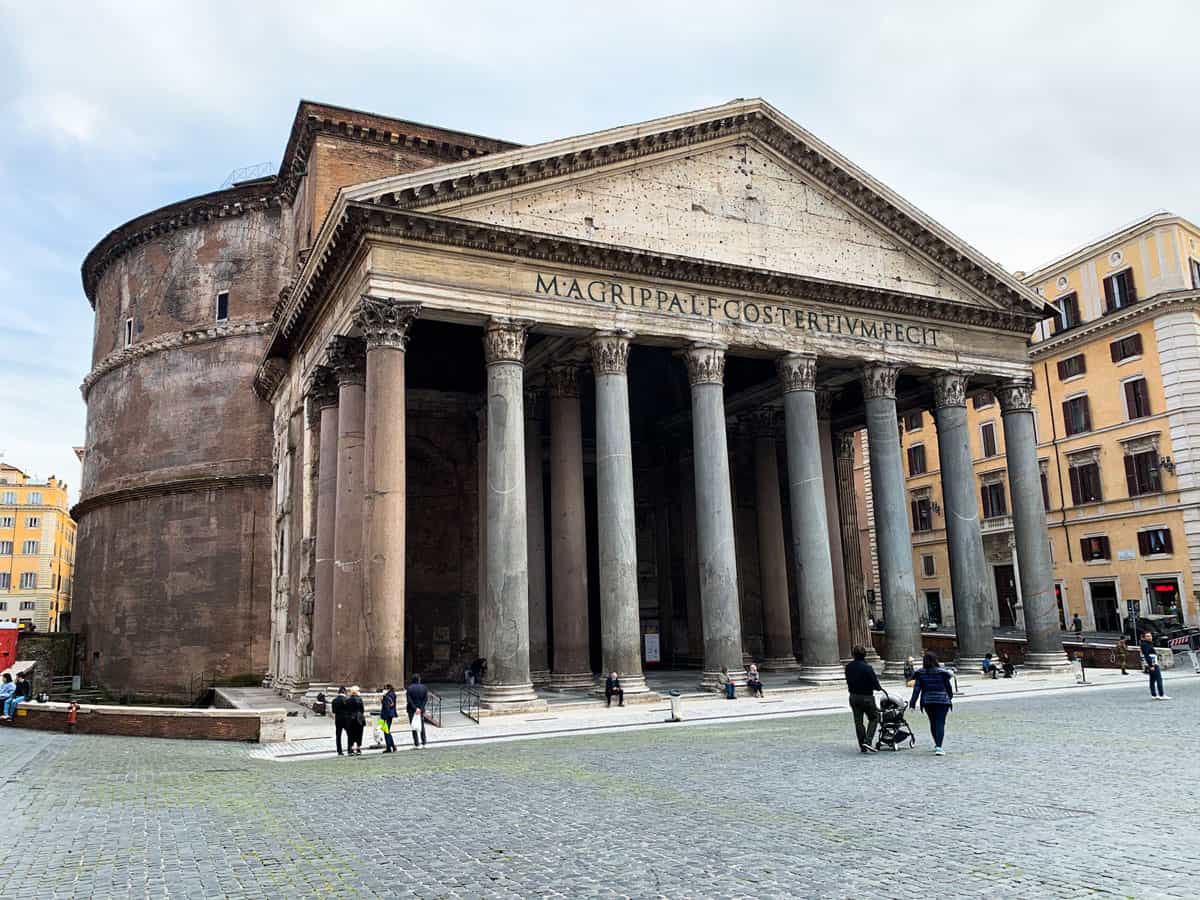
Did you know that the Pantheon dates back to 118 AD? Yes, before Christianity. But what is interesting about the Pantheon is not just the oculus, or hole, in its dome that generously leads the light inside. It is the first temple in the history where people used to worship and pray directly to the Roman Gods. It might come as a shock if I say that before the completion of Pantheon, people could not pray directly; they had to hand their presents to the priests working in the temples instead of the Gods. Those priests believed that temples were divine and sacred and not appropriate for normal people. Emperor Hadrian made a revolution to this belief and summoned Marco Agrippa, whose name is written above the Pantheon’s entrance, for the completion of the structure. The exact date of its initial construction is obscure. After the completion of the Pantheon and with the emergence of Christianity, churches were built using the idea of the direct presence of people like in Pantheon. The Pantheon itself was transformed into a church as well. The tomb of Raphael, along with other artists are inside Pantheon. Not to mention the Kings Vittorio Emanuele II and Umberto I are buried in Pantheon.
Santa Maria del Popolo
Piazza del Popolo
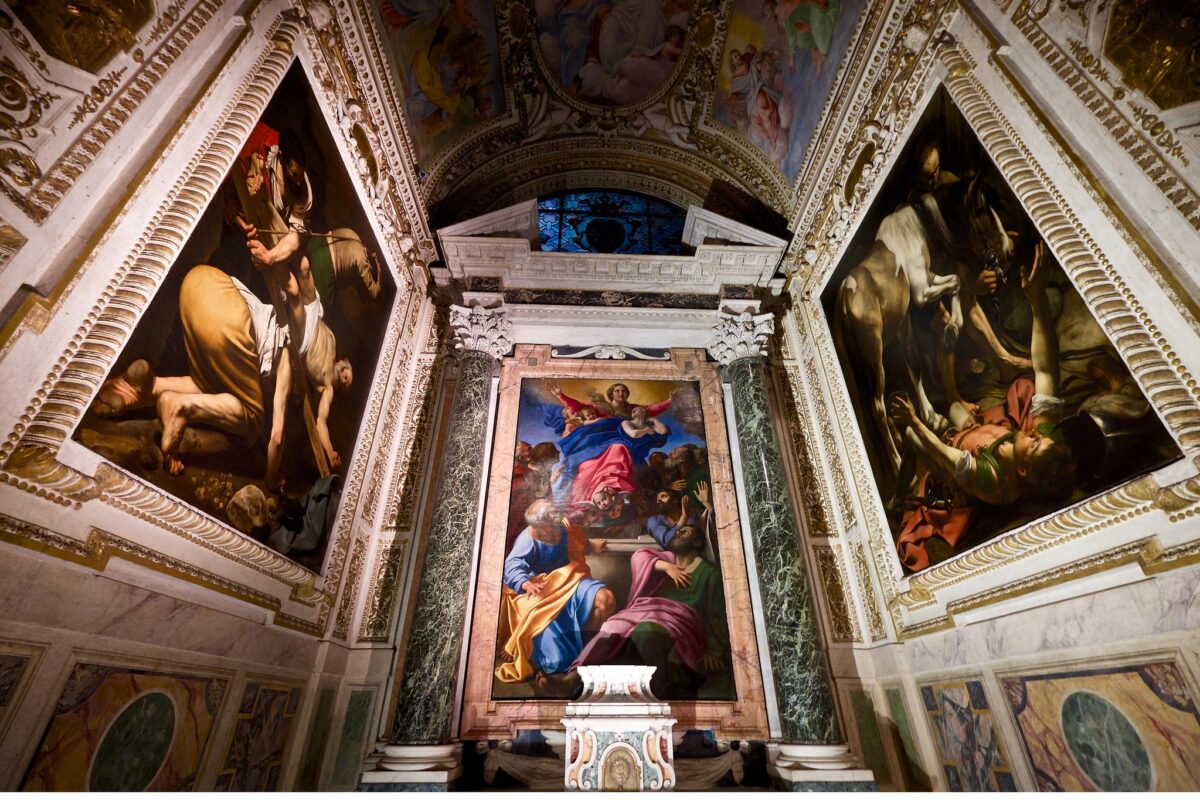
Piazza del Popolo is one of the most famous squares in Rome. Santa Maria del Popolo is constructed in the northern part of the square in 1099. The basilica was built based on a superstition back in those days: it was widely believed that the ghost of Nero, the Roman Emperor, had haunted the area. The basilica was built to relieve the area from the ghost. Though a minor church, it contains works by several famous artists, such as Raphael, Gian Lorenzo Bernini, Caravaggio and Pinturicchio. Don’t miss the Cerasi Chapel which houses paintings by Caravaggio (the Conversion of Saint Paul and the Crucifixion of St. Peter) and by Annibale Carracci and the Chigi Chapel, built and decorated by Raphael.
Book your Private Caravaggio Tour with Restoration Lab Experience
Basilica di San Clemente
Via Labicana, 95 (Colosseum)
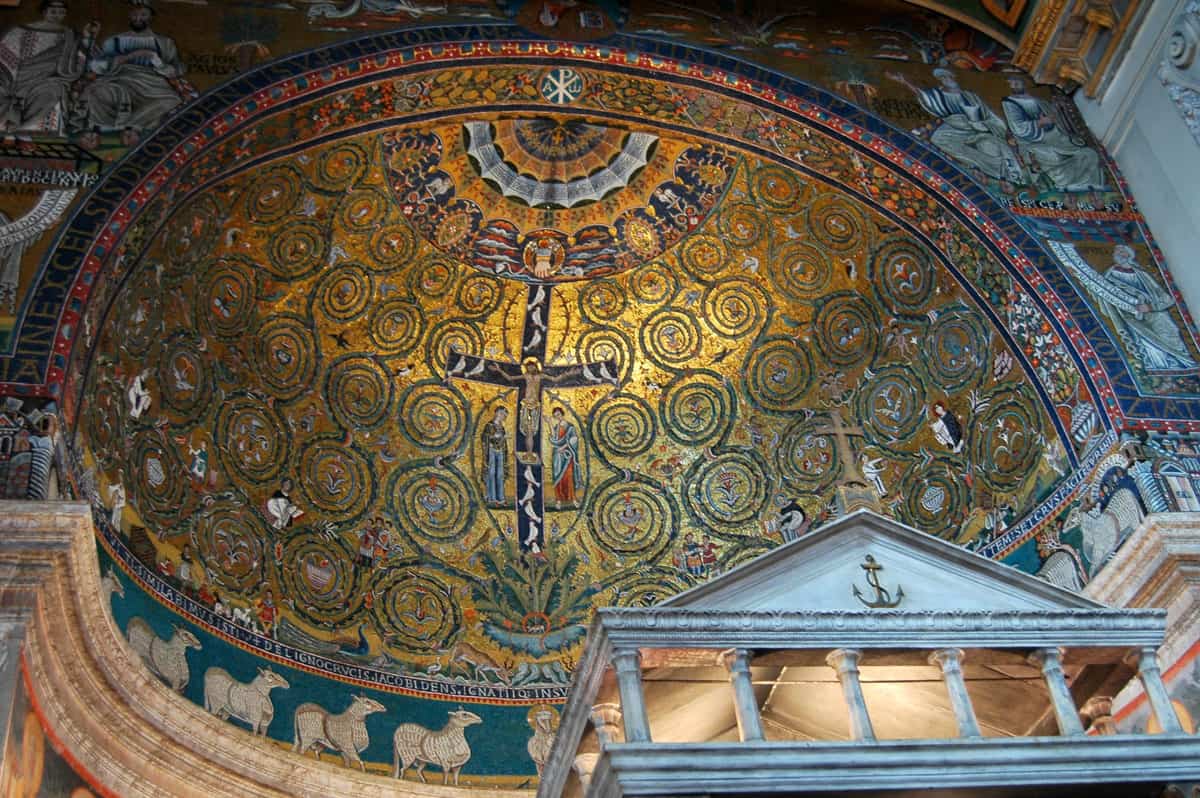
Another example of “do not get misled by the exterior”! The exterior seems to be like a typical building while it is not. The Basilica of San Clemente is a 3-floor structure. The floors are underground and they have low ceilings and narrow corridors, which is contrary to what you may expect from a Roman church. If you are claustrophobic, I do not recommend visiting this church. The more you climb down, the older things you will see. So, the ground floor is more modern (in which you can find a breathtaking byzantine mosaic) in comparison to the last floor. In fact, you climb down through history. Be sure to visit the two lower levels; on the first you will find the fourth century Basilica, which was undiscovered until the late 18th century, after it had been covered with gravel around 1,100 after Christ. Then go down to the bottom level with its remains of an ancient roman house in brick from the first century after Christ and which was transformed into a Mithraeum between the second and third centuries. The admission to the excavations costs €10.
Sant’Ivo alla Sapienza
Corso del Rinascimento, 40 (Navona)
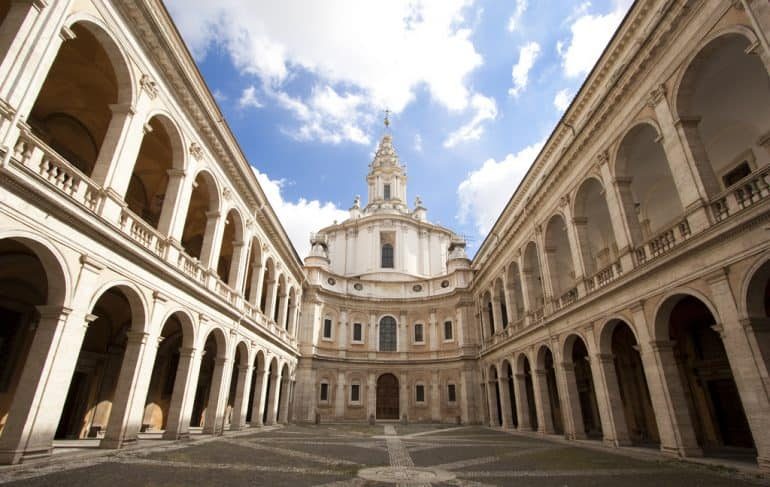
flickr.com/photos/paullew/
Built somewhere between Piazza Navona and Pantheon, Sant’Ivo alla Sapienza is closed to the public and is open only on limited hours and days. So, do check the availability before you go. This remarkable baroque gem is an exquisite design of Borromini, rival of Bernini, in which he used his geometric genius. It is the seat of La Sapienza, one of the oldest universities in the world. The featuring element of the exterior is definitely the lantern, which has a special architecture that makes you feel unable to stop looking at. As you stand in the courtyard, it seems to you that the walls are fluid and moving. I hope that you are lucky enough to visit this masterpiece.
Tips before Visiting a Church in Rome
Remember that you are visiting a place of worship and that you should wear appropriate clothing. Both men and women must always wear something that covers their shoulders and knees. Another tip is to check the opening hours of the churches.


